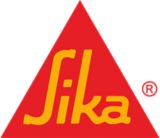
Parex® TV10 MESH
A glass fibre mesh fabric combined with specially designed surface treatments that can be used in a wide range of Parex® cement and lime render applications. For ease of identification the TV10 mesh is coloured green and has the Parex® logo throughout the mesh.
The TV10 mesh offers an effective, customised solution for the prevention of cracks that may form in render or reinforced layers of external masonry facades which are induced by construction techniques, construction materials or temperature changes. It can also be used for a wide range of repair applications. A high quality synthetic coating on the glass yarn protects the mesh against alkaline influences from the renders and base coat materials that are used.
- High mechanical strength.
- Excellent fire resistance.
- Excellent dimensional stability.
- Due to its large mesh size, TV10 mesh is a reliable reinforcement for external facade renders.
